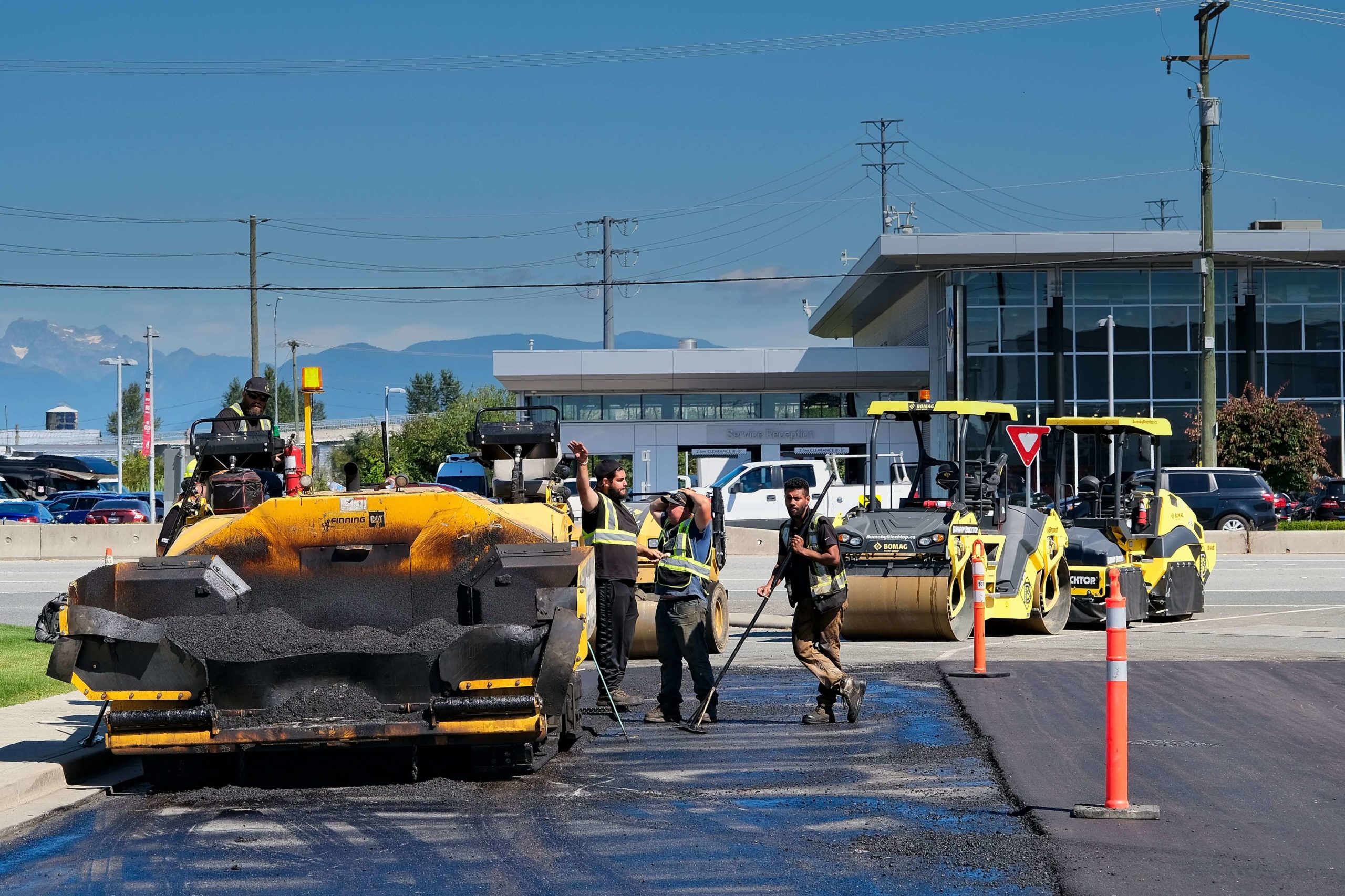Swift Solutions for Asphalt Spot Repair: Ideal Sealing Strategies
Swift Solutions for Asphalt Spot Repair: Ideal Sealing Strategies
Blog Article
Cold Mix Asphalt Vs. Hot Mix Asphalt: Which Is Right for You?

Structure Differences
Cold mix and hot mix asphalts vary considerably in their composition, with unique features that impact their efficiency and applications. Cold mix asphalt is produced by emulsifying the asphalt binder with water and an emulsifying agent before blending it with accumulation. This approach permits for the asphalt to be convenient at reduced temperatures, making it suitable for short-term repair services and for usage in chillier climate condition. Hot mix asphalt, on the other hand, is made at high temperature levels, typically in between 300-350 ° F, which assists to accomplish better compaction and a more sturdy final product. The hot mix asphalt manufacturing process involves heating the accumulation and asphalt binder individually prior to combining them at the asphalt plant.
Furthermore, cold mix asphalt has a tendency to be much less dense and much more flexible than warm mix asphalt. This flexibility makes it better matched for locations with higher degrees of movement, such as driveways or roads with heavy website traffic. In contrast, warm mix asphalt is understood for its high durability and resistance to rutting and cracking, making it a preferred choice for highways and high-traffic roadways where long life is important.
Setup Refine Differences
The procedure of installing cold mix and warm mix asphalt exhibits significant variations in their needs and treatments. In contrast, hot mix asphalt demands a more intricate installment process. Due to the heating demands, warm mix asphalt installments are generally brought out by experts with specialized devices, making certain a much more structurally audio and permanent result.
Longevity and Long Life Aspects
When taking into consideration asphalt alternatives, durability and durability are critical elements to review for lasting sidewalk performance,. Warm mix asphalt (HMA) is recognized for its extraordinary sturdiness and long life. The heats throughout the blending and laying procedure permit better compaction, leading to a denser and more powerful sidewalk structure. This causes HMA being more resistant to hefty web traffic lots, severe weather, and the impacts of aging contrasted to cold mix asphalt (CMA)
In regards to longevity, HMA normally exceeds CMA due to its superior stamina and resistance properties. HMA pavements have a longer life span, needing much less constant repair services and upkeep, which can translate to set you back savings in the long run. In addition, HMA pavements are much more quickly customizable to satisfy particular task requirements, even more boosting their sturdiness.
Expense Considerations
Considering the financial ramifications is an essential element when evaluating the choice in between warm mix asphalt (HMA) and cool mix asphalt (CMA) for pavement jobs. While the first cost of hot mix asphalt is typically more than that of chilly mix asphalt, HMA usually supplies an extra cost-effective remedy in the future due to its superior sturdiness and long life. HMA is known for its capacity to endure heavy view it now website traffic tons and rough weather condition conditions, minimizing the requirement for frequent repairs and maintenance. On the other hand, chilly mix asphalt is extra budget friendly ahead of time yet might call for more constant patching and resurfacing, leading to higher upkeep expenses gradually.
In addition to product expenses, it's vital to think about the expenses associated with installation and maintenance when comparing HMA and CMA. Ultimately, the decision between HMA and CMA should take right into account not just the initial cost however also the long-term economic effects to establish the most affordable option for the particular pavement task.
Environmental Impact Comparison
Comparison of the environmental influences in between warm mix asphalt (HMA) and chilly mix asphalt (CMA) reveals distinct distinctions in sustainability techniques. HMA production needs high temperatures, causing boosted power intake and greenhouse gas emissions. The procedure also launches unpredictable natural compounds (VOCs) and dangerous air pollutants (HAPs) right into the ambience. On the other hand, CMA is created and applied at reduced temperature levels, reducing energy usage and exhausts substantially. The reduced production temperature levels of CMA cause lowered fuel consumption and reduced levels of carbon dioxide exhausts, making it a much more environmentally pleasant choice.
Additionally, the usage of CMA often involves reusing existing asphalt sidewalk, promoting resource preservation and minimizing the amount of waste sent out to land fills. By deciding for CMA over HMA, road building jobs can add favorably to environmental conservation initiatives.
Conclusion
To conclude, the option between cool mix asphalt (CMA) and warm mix asphalt (HMA) depends on various factors such as structure, installment process, durability, durability, price, and environmental effect. cold mix asphalt. While CMA offers a fast and cost-efficient option for minor repairs, HMA makes sure remarkable durability and durability for additional hints rush hour areas. Think about these elements thoroughly to determine which kind of asphalt is the best selection for your paving requires

Taking into consideration the economic implications is an essential element when assessing the selection in between hot mix asphalt (HMA) and chilly mix asphalt (CMA) for sidewalk projects. While the first price of warm mix asphalt is generally greater than that of cool mix asphalt, HMA typically offers a more cost-effective service in the lengthy run due to its exceptional sturdiness and long life. angle parking.Contrast of the ecological impacts in between warm mix asphalt (HMA) and cool mix asphalt (CMA) discloses distinctive distinctions in sustainability practices.In final thought, the choice between chilly mix asphalt (CMA) and hot mix asphalt (HMA) depends on various variables such as make-up, installation process, longevity, longevity, expense, and ecological impact
Report this page